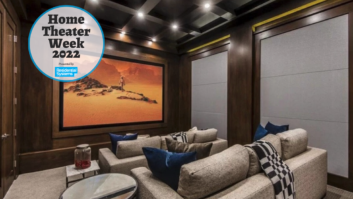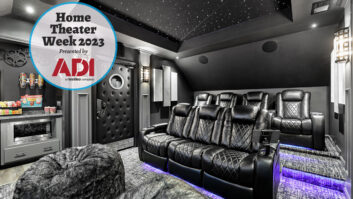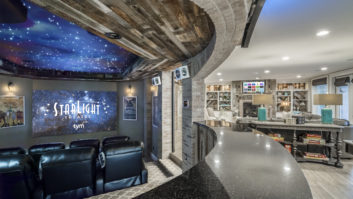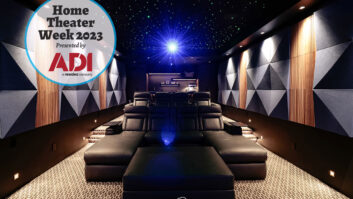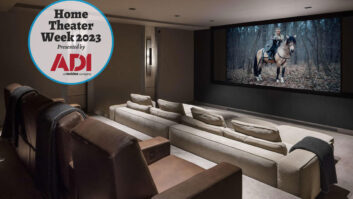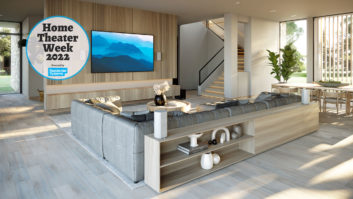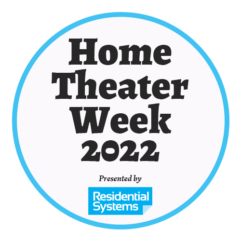
This past year — let alone the last five — have been a whirlwind for the CI channel. The new way consumers are living, working, learning, and playing in their homes, along with the continued surge of technology in all those spaces, has proven to be fruitful for the industry — but also challenging. No place is this more apparent than in the home theater space, which has been growing considerably over the past few years. And it does not look like it is going to stop anytime soon — data from the CEDIA Integrated Home Market Analysis Study anticipates an additional 23 percent growth in home theaters over the next 12 months.
As the market has grown, expectations and requests from clients have changed. Here we look at five current trends in home theater.
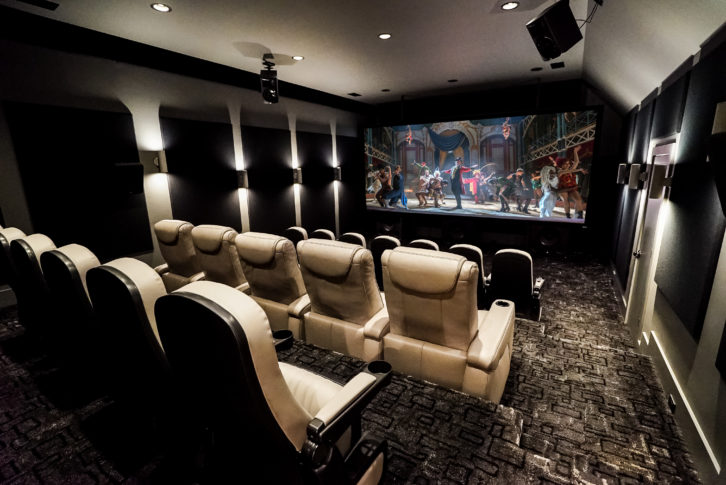
1.Dedicated Spaces
Dedicated theater spaces are being specified and designed more than ever, possibly because consumers are tired of having multi-use spaces in every room of the home and want a room devoted to just being entertained. We are also seeing them being added to housing plans right from the start.
“We’ve often wondered why the home theater has consistently been an afterthought,” says Sam Cavitt, Hawaii-based founder of Paradise Theater with offices in Southern California. “At times it has felt like we were shouting into the wind. Entertainment and the arts are things that uplift us. More recently we’ve seen the architectural community begin to embrace the dedicated theater. They are contacting us early and on their own accord, which is a shift compared to previous years.”
The trend of the design/build community embracing the technology integration channel is certainly stronger than it has been in the past. One only needs to walk through the International Builders Show (IBS) to see how technology has inundated almost every category and room in the home.
Regardless how we have gotten here, the renewed demand for dedicated entertainment spaces will likely continue as technology to support these environments and immerse the consumer in all forms of visual and audible art continues to expand.
2. Streaming is King
Media production and consumption is extremely disruptive, and some might say out of control. It’s such a big topic right now the CEDIA Expo keynote will feature Greg Durkin from Guts+Data who will focus on the streaming content conundrum, the overload felt by the consumer, and what integrators can do to help. These days most visual media are being streamed, but there are so many services it’s hard to keep track of them all and remember what show is on which service.
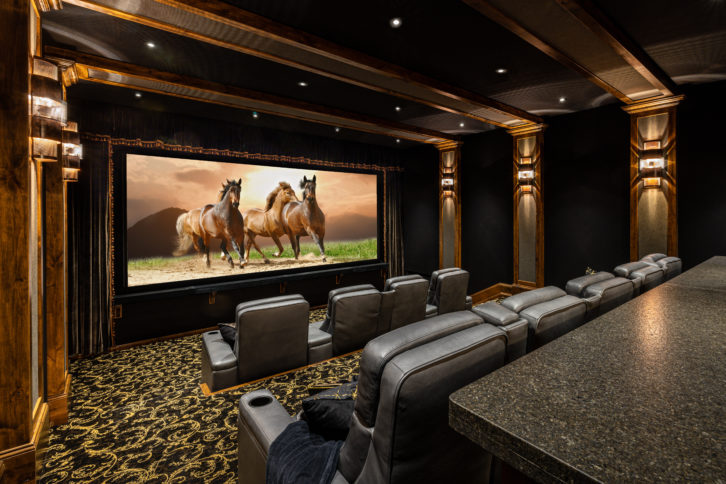
On the plus side, this massive demand has also forced content creators like Netflix to up their game and provide content using high-definition video compression technology and immersive audio formats.
“In the high-end market, people are still putting media servers in their homes, but that only represents a small portion of what a homeowner would watch,” says Scott Newman, CEO of Audio Advice. “Fortunately, the compression is getting better from the streaming services, allowing for improvements in the video quality.”
Looking to the future, we can anticipate that we will soon see the death of physical media being produced for mass consumption. Streaming will not only be where we will see most of the content produced, but cinematic releases will continue to go to streaming services at the same time — or within a short time after — they are released in theaters, which is just another reason to have a dedicated home theater.
3. Immersive Music and Atmos
Home theaters are not just for movies anymore — immersive music has contributed to the new ways people are using their media spaces, driven by the surge in popularity for Dolby Atmos technology by the consumer.
“So often we see that clients have not thought about how they may use their dedicated theater to listen to music,” says Adam Pelz, CEO of Bespoke Home Cinemas. “Generally, consumers may be used to a 2-channel system or using headphones or Bluetooth connections in their car to listen to music. In our final walkthroughs with clients, we will spend a significant amount of time showing them what playing live concert recordings and high-fidelity music would be like in their theater environment. They leave in awe of the immersive experience.”
“Music producers are taking the sound to another level,” adds Cavitt. “Music is being written and created specifically for an immersive experience. In offering clients in-depth demos, we can help them bridge that awareness gap of what they can use their dedicated entertainment spaces for.”
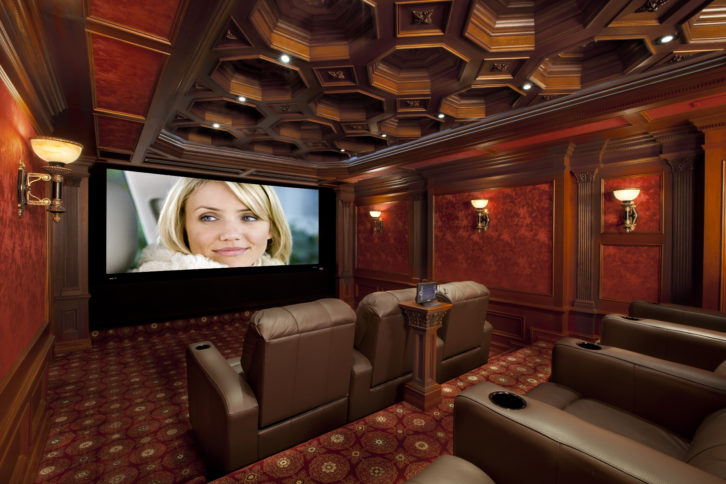
Dolby has done a superb job with marketing and consumer awareness around Dolby Atmos — which is perhaps the most recognized surround technology behind the famous THX “The Audience is Listening” deep note that used to give us goosebumps before the start of a movie.
However, awareness does not equal understanding, and there is confusion around the technology. “Everyone is asking about Atmos, but they think they need 32 speakers for small spaces, which created an initial barrier,” says Dennis Erskine, CEO of Erskine Group, Inc. “Consumers are somewhat misinformed, but thankfully are getting educated when they come to integrators that specialize in personal cinemas.”
4. Video Processors and Calibrations
Those who have been around a few decades can remember the massive demand for video processors to go along with giant CRT projectors. Back in those days it was needed to take the lower quality media formats and reproduce them at a higher quality.
However, if you ask Pelz, video processors are more necessary now than ever before. “Integrators need to understand and communicate to their customers that some level of dynamic tone mapping is required to get really good HDR quality; the way it is being handled without outboard video processing is poor at best,” he says. “We are seeing huge differences in the quality of the mid-line projectors when you add a video processor.”
Also by Ian Bryant: Defining Wellness for Custom Installers
Along with video processing, video and audio calibrations can take a well-designed system and put it over the top. It hasn’t always been easy to sell consumers on calibrations outside of the luxury market, but Newman says demand for calibration is 10 times what it was in the past. “Calibration systems have gotten better and easier to use,” he says. “These software platforms are faster and simpler than their predecessors, and professional integrators are telling people more now than ever that calibrations matter. The result is that consumers are finally asking for it and supporting the cycle.”
5. Video Walls
Video walls in the residential space took off back in 2017 with the introduction of The Wall by Samsung. These days there are options by the other top consumer brands and the trend is continuing to grow.
“Video walls are still going in, but there is still a huge barrier of cost,” says Pelz. “To get to a 4K image, you must have a specific number of panels — sometimes 14 to 15 feet wide — and that could cost well into a half-million dollars. They also create lots of heat and are a lot more work to install.”
Plus, there are engineering obstacles to overcome, mainly the center channel speaker placement. The human ear is very sensitive to the location of sounds, which is why the industry recommends placing your center channel speaker as close to the center of the image as possible. When it comes to video walls that have floor-to-ceiling glass, it becomes a challenge to be able to get the correct center channel placement. There are a few options out there, but each one comes with limitations and their own consequences. Cavitt believes a solution will prevail. “There are so many people in this industry that are highly talented,” he says. “If our industry is convinced the audience is indeed listening, I am confident we will overcome that challenge.”
The private theater industry has come back strong and is growing. With new technologies, high consumer awareness and demand, and the continually growing technology integrator channel, the future looks bright.
